Will Chinese portable ATGMs cope with modern tanks?
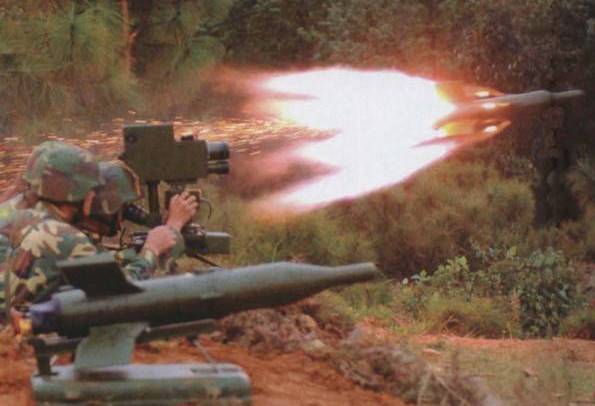
During the Cold War, China was much inferior to the United States and the USSR in the field of high-tech weapons. Until the mid-1980s, the military doctrine of the PRC was based on the concept of a “people's war,” in which, during the course of operations against an external aggressor, the main stake was placed on numerous infantry units and armed masses. It is clear that with this approach, militias recruited from peasants, for the most part, were equipped with light infantry weapons, and against the enemy tanks they were supposed to use hand grenades and obsolete rocket launchers. The main anti-tank weapons in the personnel of the PLA in the mid-1970s were: in the platoon link - 80 mm Type 56 hand-held anti-tank grenade launchers (copy of RPG-2) and Type 69 (copy of RPG-7), in the company link - 75 mm recoilless guns Type 56 (copy of the American M20) and 82 mm Type 65 (copy of the Soviet B-10). The anti-tank reserve of the Chinese infantry battalion was four 105-mm recoilless Type 75 guns (a copy of the American M40) mounted on jeeps. The infantry regiments were given anti-tank batteries armed with 57-mm Type 55 guns (a copy of the ZiS-2), as well as 85-mm Type 56 guns (a copy of the D-44) and Type 60 (a copy of the D-48).
The main feature of all of these anti-tank systems was the simplicity of design and the relatively low cost of production, they were available for development by military personnel with a minimum educational level. At the same time, hand-held anti-tank grenade launchers and recoilless guns with a relatively small mass had a small effective firing range, and the anti-tank artillery available in the PLA did not ensure a confident defeat of the frontal projection of tanks created in the USSR and the USA in the second half of the 1960s.
The first samples of guided anti-tank missiles Nord SS.10 and Cobra Chinese intelligence mined in the second half of the 1960s. In the early 1970s, BGM-71 TOW missiles were delivered from Vietnam. Unexploded American-made ATGMs had mechanical damage and did not give an idea of the guidance system. Much closer and understandable for Chinese specialists was the ATGM 9K11 "Baby", which since 1972 has been used by Viet Cong fighters. Using wire-guided missiles, the Vietnamese fought with counterattack armored vehicles and attacked the strongholds of the South Vietnamese defense. In total, the North Vietnamese ATGM calculations destroyed and disabled up to a dozen tanks M48, M41 and BTR M113.
In the late 1960s, an attempt was made in the PRC to independently create an anti-tank missile system. On the basis of the French ATGM Nord SS.10 in the early 1970s, specialists from the Beijing Institute of Technology and the First Artillery Academy created a complex that received the designation J-265. According to Chinese sources, some of the technical solutions borrowed from the Soviet 3M6 Bumblebee complex, which Chinese specialists familiarized with during their training in the USSR, were also used in the construction of this ATGM.
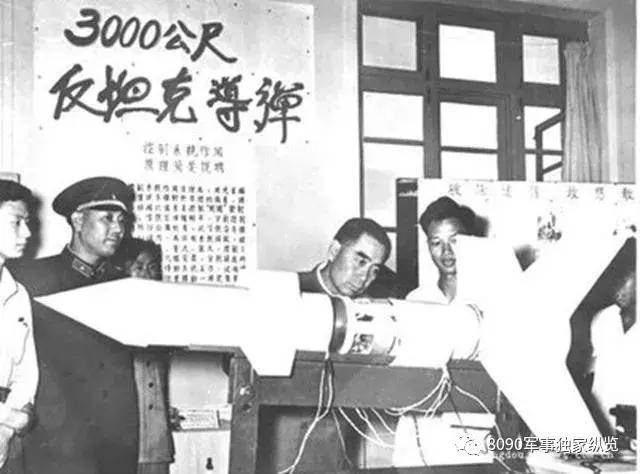
ATGM J-265 at a booth at a research institute
As in the French prototype, missile commands after launch were transmitted over a wireline, and it was manually aimed at the target. The starting mass of the ATGM J-265 is more than 15 kg, the length is about 1 m. The flight speed is about 90 m / s. Firing range: from 500 to 1800 m. The missile carried a cumulative warhead weighing 5 kg. The J-265 anti-tank missile system was produced in a small series at the No. 724 plant in Shenyang and has been in trial operation since the early 1970s. However, by that time this ATGM was clearly not in line with modern requirements and the Chinese military were not satisfied with its low operational, operational and combat characteristics.
The Chinese ATGM, known as J-201, was a clone of the West German complex Cobra. The firing range of the J-201 was 400-1600 m. The mass of ATGMs was about 10 kg, the armor penetration rate in the normal range was 350 mm.
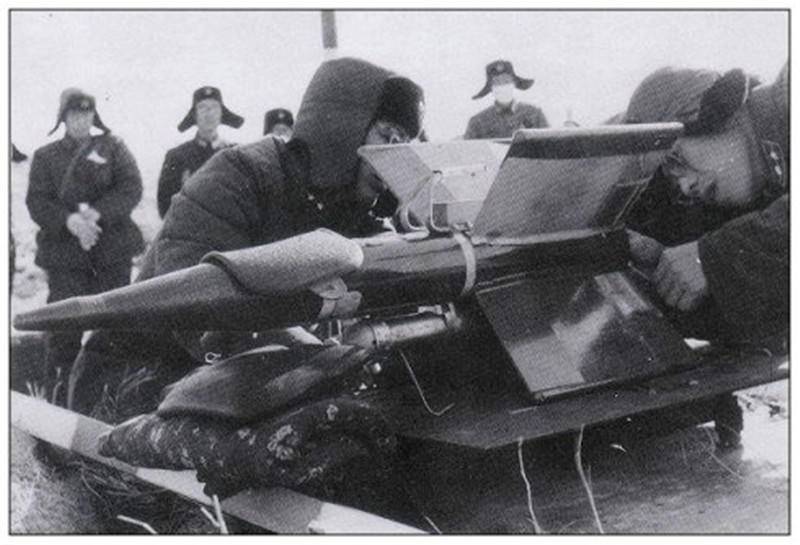
Preparing to launch ATGM J-201
Tests ATGM J-201 began in 1964, but slowed down significantly due to the outbreak of the "cultural revolution". In 1973, an attempt was made to start mass production. But due to economic difficulties and the decline in production culture, a very limited number of anti-tank systems were launched, and their reliability left much to be desired.
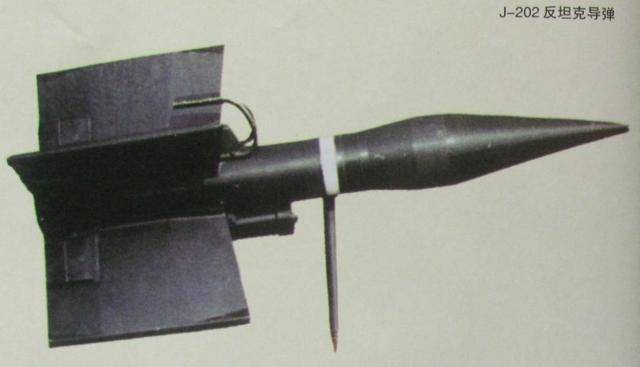
ATGM J-202
An improved modification of the J-202 was submitted for testing in 1977. The missile could hit targets at a range of 200-2000 m, armor penetration in the normal range was 470 mm. But, like the early model, the J-202 ATGM was not very reliable. So, in the course of acceptance tests, one of the missiles, after launch, turned 180 ° in the air and, without exploding, fell next to the selection committee. Although no one was hurt, this incident made a very negative impression on the PLA top leadership and party functionaries. Like the previous model, the J-202 ATGM was not transferred to mass production. By the early 1980s, all anti-tank systems J-265, J-201 and J-202 were withdrawn from service.
The independent creation of a reliable functioning guidance system and compact missiles satisfying the launch range and armor penetration proved to be an overwhelming task for the Chinese defense design bureaus. After the failure with their own anti-tank systems in China, they went on a beaten track — they began copying the Soviet anti-tank complex Malyutka. It is not known whether the Vietnamese handed over to the Chinese comrades the anti-tank systems received from the USSR, but already in 1979 the PLA entered service with the HJ-73 ATGM (Hong Jian, Red Arrow), which is a Chinese copy of the Soviet 9K11 Baby complex. It is possible that Soviet-made ATGMs with China could be shared by North Korea or Egypt.
During the hostilities in Southeast Asia and the Middle East, the 9K11 Malyutka ATGM with a firing range of 500 to 3000 m and 400 mm normal armor penetration proved itself to be a very effective means of fighting armored vehicles. But the effectiveness of its use was directly related to the level of training of the operator and the combat situation. The operator aimed the missile at the target manually using the joystick, guided by the tracer in the rear of the ATGM. The effectiveness of the use of the complex depended strongly on the degree of training and the psychophysical state of the operator. This was confirmed by statistics of launches ATGM 9M14 at the training ground and in combat conditions. In the quiet environment of the landfill, the most experienced operators achieved a probability of 0,8-0,9 getting into the target. Being in a stressful situation, the same operators on average out of 10 starts hit the target 5-6 times. In addition, at a low cost and a very simple design, the preparation of anti-tank systems for combat use was not very convenient. The missile needed to be removed from the satchel, attach the warhead, open the wing console, place the missiles on the launchers, which before that also had to be deployed in position. To ensure the safety of the operator from the effects of the gas jet of the rocket engine, the control panel was kept away from the launcher. It also took time to bring a rocket starting from the side of the missile to the line of sight, which, in turn, imposed a limitation on the minimum launch range. A missile flying at a speed of no more than 115 m / s was clearly visible visually, which gave the crew of the attacked tank a chance to evade, shoot at the anti-tank system or put a smoke screen.
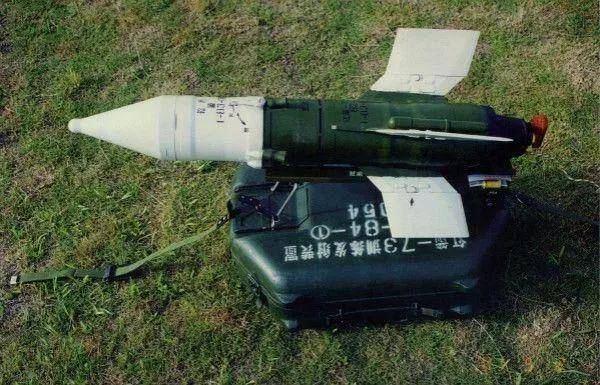
ATGM HJ-73
The basic version of the complex HJ-73 practically did not differ from the ATGM 9K11 "Baby". As with Type 69 grenade launchers, the new Chinese anti-tank systems were primarily sent to military units deployed along the Sino-Soviet border. At the first stage, in one of the battalions of the PLA infantry regiment in the anti-tank platoon, 105-mm recoilless guns were replaced by the HJ-73 ATGM. There should have been three squads in the platoon. The structure of the ATGM unit included: a commander, a gunner-operator, carrying a suitcase with a control panel, and two fighters with suitcases in which the disassembled rockets were. They were helped and covered in position by four more soldiers.
In the mid-1980s, the PLA entered service with the HJ-73B ATGM, which used a semi-automatic guidance system. Now the operator needed only to keep the target in sight for guidance, and the automation itself brought the missile to the line of sight.
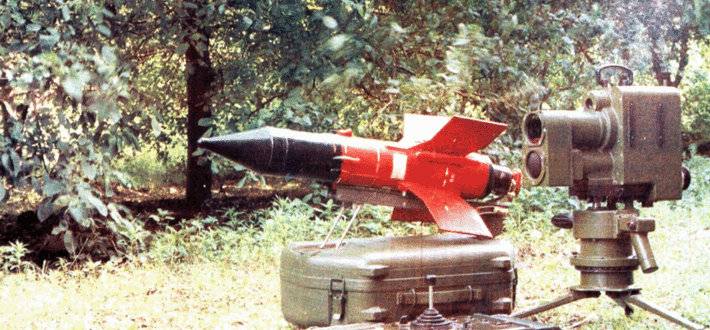
ATGM HJ-73V
Thanks to this, the probability of hitting became much less dependent on the skill of the shooter, and on average eight out of ten missiles hit the target. In addition to guidance equipment, the rocket itself underwent improvements. The firing range remained the same, but the armor penetration was increased to 520 mm. Missiles of the new modification could be fired from old systems, but at the same time they had to be pointed manually using the joystick. In the 1990s, the possibility of installing interchangeable high-explosive fragmentation warheads appeared on HJ-73B ATGM missiles, which expanded their scope.
The most perfect modification of the Chinese clone "Baby" was ATGM HJ-73S. The introduction of a heat direction finder on a new element base made it possible to reduce the error in missile guidance. For the power supply of the complex, a 30-volt nickel-cadmium battery is used, which can launch more than 30 missiles on a single charge. An improved ATGM, thanks to the use of improved fuel recipes in engines, can hit targets at ranges of up to 3500 m. The missile was equipped with a new tandem warhead, the armor penetration of which, according to Chinese sources, is 800 mm. Based on operating experience, in case of contact fuse failure, the missile was equipped with a self-destruction mechanism.
Despite the improvements, all modifications of the HJ-73 ATGM are now considered obsolete. Although the armor penetration of the latest models is significantly increased and they are theoretically capable of overcoming the protection of modern tanks, the HJ-73 ATGM is inferior to other complexes in the aggregate combat characteristics. The newest ATGM modifications have a low flight speed - no more than 120 m / s. When the rocket is launched, a clearly visible cloud of dust and smoke is formed, unmasking the position. Deploying the complex to positions and reloading launchers takes too much time. The guidance system is highly vulnerable to exposure to infrared spotlights and complexes of optoelectronic countermeasures. Nevertheless, despite all these shortcomings, the HJ-73B / S anti-tank missile systems, due to their relative cheapness and mass character, continue to be in service with the ground and airborne troops, marines, and PLA coastal defense units. ATGM HJ-73 were exported and used during the hostilities in Afghanistan, Iraq, Yemen, Libya. In connection with the implementation of the program of cardinal modernization of the Chinese armed forces and large-scale rearmament with modern models, we can expect that in the next decade all ATGMs of the HJ-73 family will be replaced by new anti-tank systems in the PLA.
Copying the Soviet ATGM of the first generation 9K11 "Baby", Chinese experts realized that it no longer fully meets modern requirements. In this regard, in the early 1970s, the design of the second-generation anti-tank guided missile system began. ATGM, designated HJ-8, can not be called a complete copy of any specific Soviet or Western complex, but it shows the features of the American ATGM TOW and Franco-German Milan. Western sources say that the process of creating the HJ-8 stalled until the Chinese got access to the missiles and control equipment of the ATGM Milan.
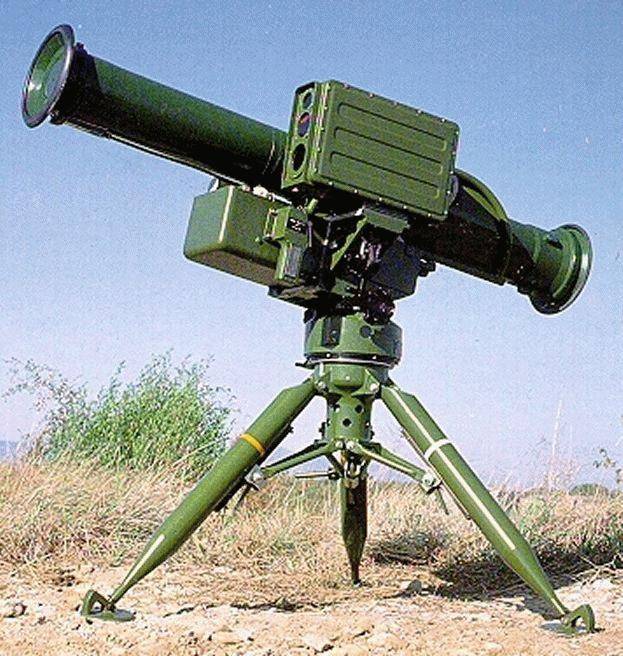
ATGM HJ-8
The completion of the HJ-8 anti-tank missile system was completed a few years after the start of active military-technical cooperation between the PRC and Western countries. The formal adoption of the ATGM HJ-8 into service took place in 1984, but the mass production of the complex began only in 1987.
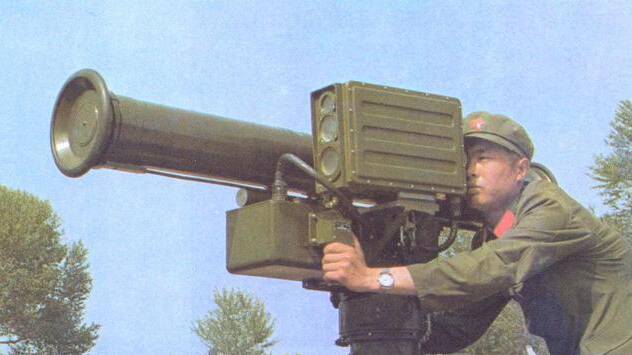
As in other second-generation anti-tank missile systems, to direct the missile to the HJ-8 ATGM operator it was enough to keep the target in the crosshairs of the sight.
The HJ-8 complex includes a tripod launcher, on which an optical sight, an infrared radiation receiver, a computer, and a launch vehicle with a rocket are mounted. There is also auxiliary equipment for maintenance of the control system and the health check of ATGMs.
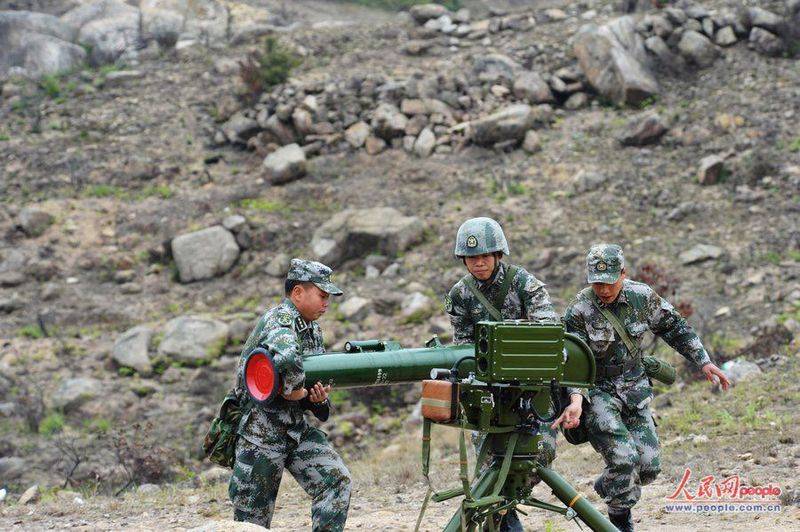
The first production version of the HJ-8 anti-tank missile system can hit targets at ranges from 100 to 3000 m.The 120-mm guided anti-tank missile is launched from the TPK with a length of 1566 mm, the curb weight of which is 23 kg. The rocket itself weighs about 11 kg. The maximum missile flight speed is 220 m / s. The weight of a tripod launcher with an aiming control unit is about 25 kg. The first serial modification of the ATJ HJ-8 was equipped with a cumulative warhead, capable of penetrating 500 mm homogeneous armor when hit at right angles.
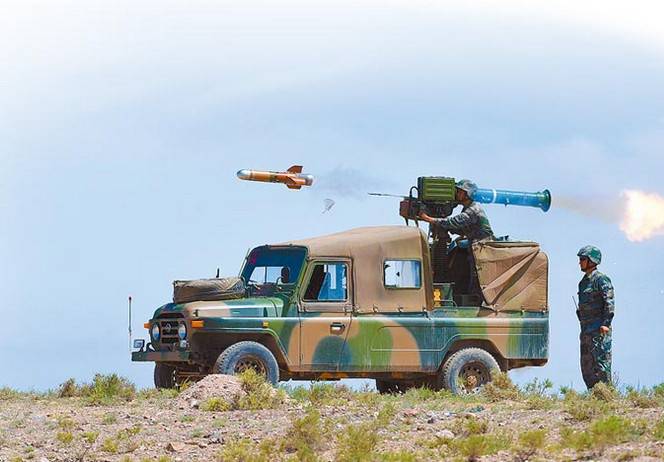
Production of the HJ-8 was carried out on a very significant scale, complexes of various modifications were produced in a portable version, installed on vehicles and armored vehicles. At the beginning of the 21st century, this complex displaced early models in the anti-tank units of the PLA anti-tank missile systems HJ-73.
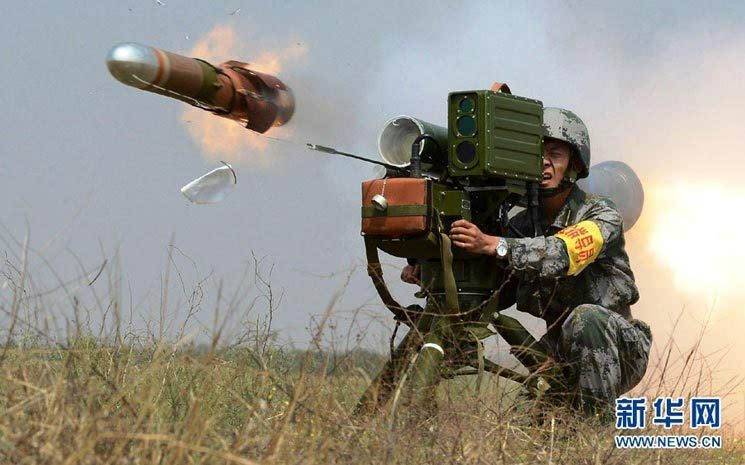
Soon after the adoption of the first modification, the delivery of the improved HJ-8A ATGM with a more reliable fuse and warhead with armor penetration up to 600 mm began in the army. In view of the increase in the weight of the warhead and the fuel charge in the jet engine, the starting mass of late rocket modifications is 12-14 kg.
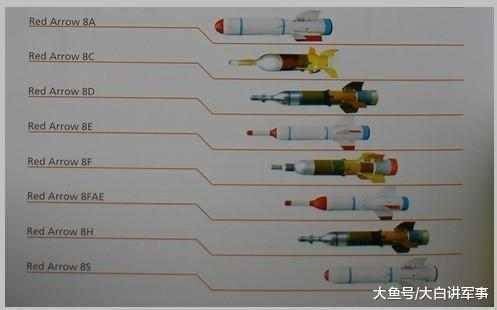
Various modifications of ATGM family HJ-8
Since the mid-1990s, the production of HJ-8C missiles with a tandem cumulative warhead capable of overcoming dynamic protection and penetrating 800 mm homogeneous armor has been carried out. On the HJ-8D modification, the firing range was increased to 4000 m. The HJ-8E ATGM received a newly designed digital control system with improved firing accuracy and the PTI-32 night sight. The HJ-8F and HJ-8AE missiles are redesigned HJ-8C and HJ-8A anti-tank missiles, which increase the firing range and armor penetration. ATGM HJ-8H uses a more compact filling, which allowed to increase the warhead and bring armor penetration to 1000 mm of homogeneous armor. A number of sources say that the ATGM’s ammunition includes a missile with a thermobaric warhead, most likely the HJ-8S.
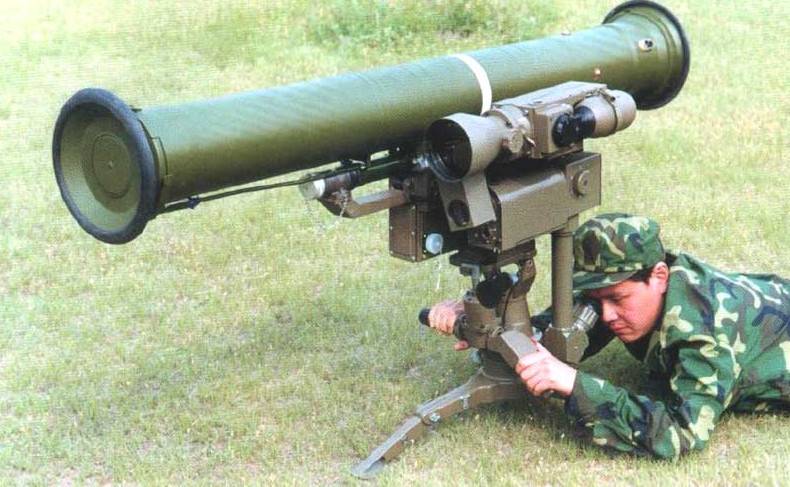
ATGM HJ-8L
The most advanced modification of the complex today is HJ-8L. In addition to the possibility of using new missiles with increased range and armor penetration, the new model received a lightweight launcher and is equipped with a periscope sight, which reduced the operator’s vulnerability to enemy fire. ATGM HJ-8L can use ATGMs of all early modifications, and the control system automatically recognizes the type of missile installed and selects the control mode. But, judging by the available information, the HJ-8L complex is offered exclusively for export, if ATGM of this type is available in the PLA, then in a minimal amount. This is due to the fact that the anti-tank units of the Chinese army are very well saturated with second-generation guided missile systems, which, subject to the use of new ATGMs, can overcome the protection of the most modern armored vehicles. In addition, the PLA command relies on anti-tank systems operating in the “fired and forgot” mode, and considers it inappropriate to further purchase anti-tank systems with a wired system for transmitting control commands.
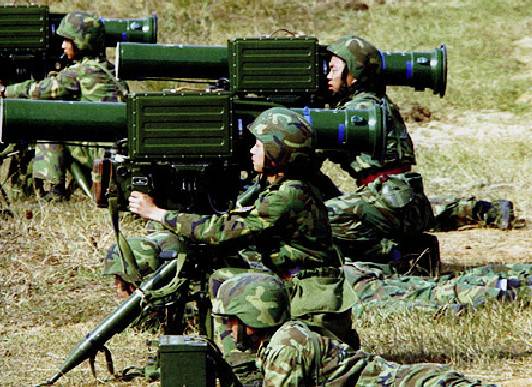
According to information published in the Chinese media, by the beginning of the 21st century, the PRC industry had produced more than 200 HJ-000 guided missiles of various modifications. ATGM HJ-8 are installed on various armored chassis and off-road vehicles.
Chinese second-generation systems HJ-8 have a good balance of cost and efficiency. They are popular in the global arms market, are in service in about 20 countries and were used in military operations in the territory of the former Yugoslavia, in Shiri Lanka, Iraq, Syria and Libya.
The anti-tank complex HJ-8 in the 1980-1990s was consistent with the views of the Chinese military on what should be the anti-tank systems of battalion and regiment units. But to equip anti-tank divisions, it was desirable to have a more long-range and noise-immune complex with a missile having an increased flight speed. The development of the HJ-9 ATGM with a laser guidance system began in the early 1980s, the complex was first shown to the general public in 1999. Due to the considerable size and weight of the complex’s equipment and missiles, it was designed from the very beginning in a self-propelled or portable version. The main part of the HJ-9 ATGMs available in the PLA is located on the chassis of the WZ-550 armored personnel carriers.
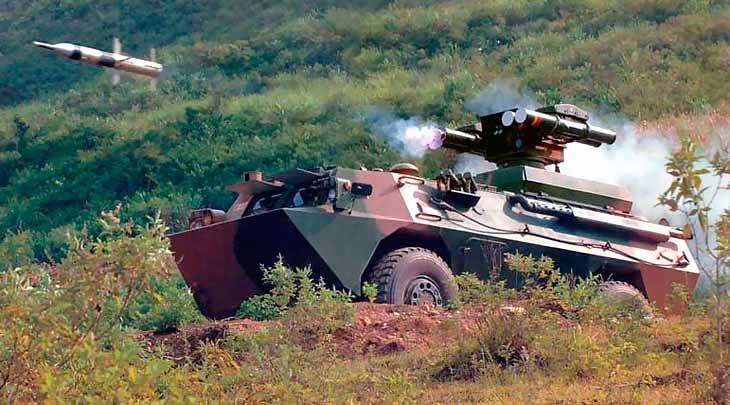
Self-propelled anti-tank missile system AFT-9
This self-propelled missile system is known as AFT-9. This machine has a movable turret with four guides for TPK, periscope optical and thermal imaging sights, a laser emitter, horizontal and vertical guidance mechanisms, built-in diagnostic equipment and ammunition for eight missiles. The combat work is automated as much as possible - the missile is aimed at the target in a semi-automatic mode, the complex is reloaded automatically, including during movement. The semi-automatic control system with television equipment for tracking the rocket and transmitting control commands via the laser beam has a range of up to 5500 m. In the dark, a thermal imaging sight with a detection range of up to 4000 m is used. The transport and launch container, equipped with a 152 mm missile, weighs 37 kg and has a length of 1200 mm. The defeat of ground targets at a range of 100 to 5000 m is ensured. Armor penetration along the normal is 1100 mm.
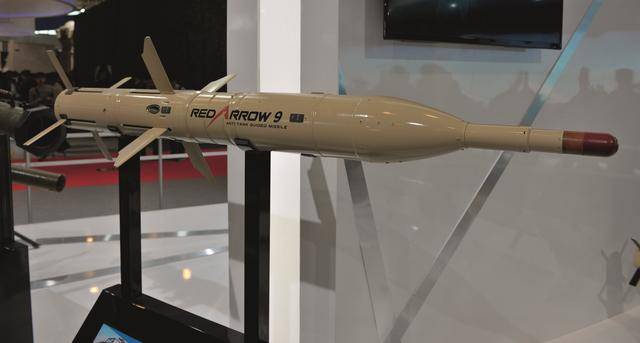
Layout ATGM HJ-9
The missile carries a tandem cumulative warhead, which allows you to overcome dynamic protection. According to the manufacturer, the probability of hitting a tank-type target is 90%. ATG HJ-9 can also be equipped with high-explosive or thermobaric warhead. This makes it possible to deal with enemy manpower, destroy firing points and field fortifications.
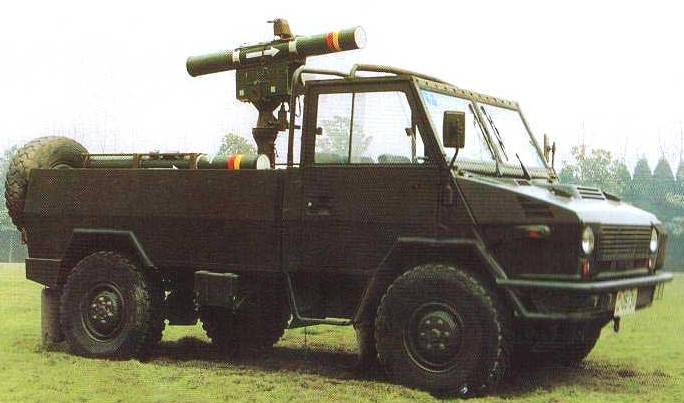
ATGM HJ-9 on a Nanjing NJ2046 HMV all terrain vehicle
In addition to the AFT-9 self-propelled systems, a part of laser-guided anti-tank systems is installed on light off-road vehicles, which are an anti-tank reserve of quick reaction forces and airborne units. If necessary, the transportable complex HJ-9 can be removed from the vehicle and used from the ground.
The latest modification is the HJ-9A ATGM with a radio command missile guidance method. This modification has a semi-automatic guidance system and is equipped with a command transmitter operating in the millimeter frequency range. To detect and track the target in this case, the ATGM operator uses optical or thermal imaging sights. It is believed that the radio command method of aiming ATGMs on a target is more preferable in conditions of low transparency of the atmosphere and when the enemy sets a smoke screen.
After launch, the mismatch angle between the line of fire and the position of the rocket in space is calculated using a television goniometer, control commands are transmitted by a microwave transmitter to the on-board missile control system. The dimensions and mass of the HJ-9A rocket, the firing range and armor penetration are the same as those on the laser-guided modifications.
Chinese developers are closely following the development trends of weapons of war. And it would be strange if the PRC did not start creating ATGMs operating in the “shot and forgot” mode. Generous funding of basic and applied research, combined with the developed production of electronic components for various purposes, made it possible to create and mass-produce the HJ-12 anti-tank system. It is possible that once again, Chinese intelligence had a hand in creating a new ATGM.
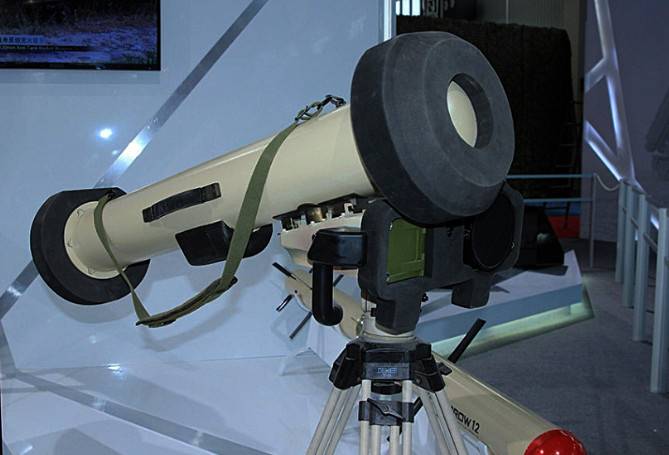
Layout ATGM HJ-12 at the Eurosatory 2014
For the first time, the HJ-12 ATGM model under the export name Red Arrow 12 was presented in June 2014 at the Eurosatory 2014 exhibition, held in Paris. At that time, the tests of the complex were not yet completed and its serial production was not conducted. However, the demonstration of the exhibition model testified to the confidence of the developers that the HJ-12 ATGM will be able to confirm the specified characteristics and will be adopted.
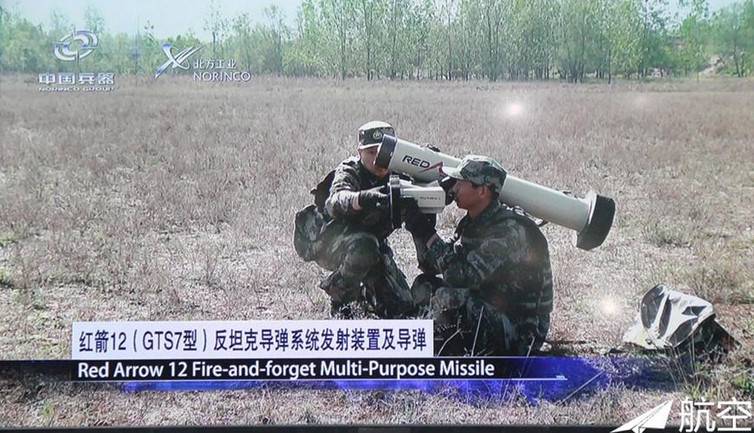
In appearance, the HJ-12 anti-tank complex resembles the American FGM-148 Javelin and has a similar principle of operation. The Chinese ATGM is equipped with an infrared seeker, to which information about the target is sent from a thermal imaging sight, after which the target is captured and launched. The design of the GOS uses solutions aimed at increasing the efficiency of capture and tracking of a contrast target in the infrared range against the background of natural and artificial interference.
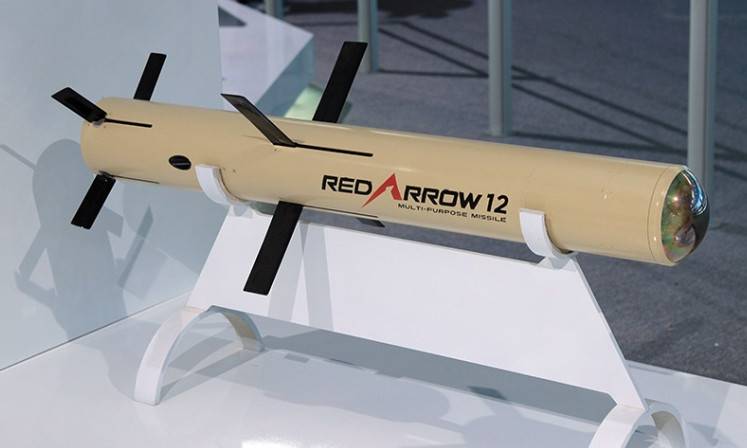
Layout ATGM HJ-12
Rocket launch mass - 17 kg, length - 980 mm, diameter - 135 mm. ATGM has a cylindrical body shape with a transparent head fairing. In the central and tail parts of the hull are folding wings and rudders. The defeat of armored targets is carried out by the tandem cumulative part. At the stands of the manufacturer it is said that the missile can be equipped with high-explosive fragmentation or thermobaric warheads. The maximum firing range is up to 4000 m. In the dark and in poor visibility, the firing range is limited by the ability of the sight to detect and capture the target. On a moonless night, the range of night optics does not exceed 2000 m. NORINCO also offers a version of a rocket with a television seeker, which can be adjusted using the operator’s console.
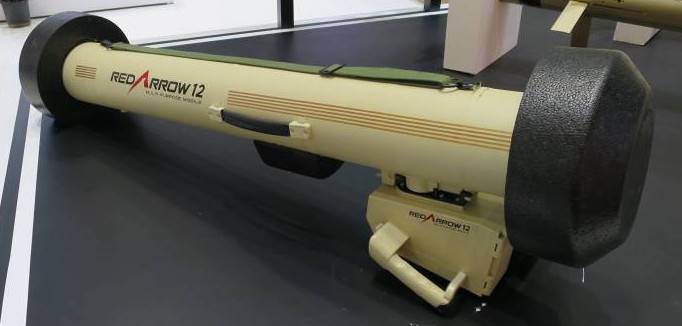
Layout ATGM HJ-12
The curb weight of the equipped curb is 22 kg, which makes it possible to carry it by one soldier. For carrying there is a belt and a handle. The rocket is stored in a disposable composite TPK, which is connected to the sighting device through electrical connectors. At the ends of the container are protective washers made of expanded polystyrene. After the shot, the empty TPK is replaced by a new one. The rocket is ejected from the container by a starting powder charge, the main engine starts at a safe distance from the launcher. Guidance launched missiles takes place completely offline, and the operator can immediately take cover or reload the complex for a second shot. Depending on the chosen firing mode, the missile can fly towards the target either along an arcuate path or along a lay trajectory. The declared armor penetration of the HJ-12 is 1100 mm after overcoming dynamic protection. This makes it possible to guarantee the destruction of any modern tank when it gets into it from above. Using a “cold” ATGM launch allows firing from enclosed spaces and field shelters.
Apparently, the HJ-12 ATGM is currently in trial operation and is being actively tested in the PLA combat units. Open sources do not have data on the level of technical reliability and the real probability of hitting a typical target. However, in March 2020, information appeared about the order by a foreign buyer of a batch of HJ-12E (export modification). The buyer country is not named, but, apparently, it is one of the Arab oil monarchies.
Provided that the HJ-12 ATGM really corresponds to the declared characteristics, is strong and reliable enough, Chinese developers can be congratulated on the successful creation of the third-generation anti-tank complex, which surpasses the American FGM-148 Javelin in a number of parameters.
Unfortunately, the third generation ATGMs are not yet in service with the Russian army. Our armed forces continue to use second-generation systems, when shooting from which it is necessary to keep the target in sight until missiles hit it.
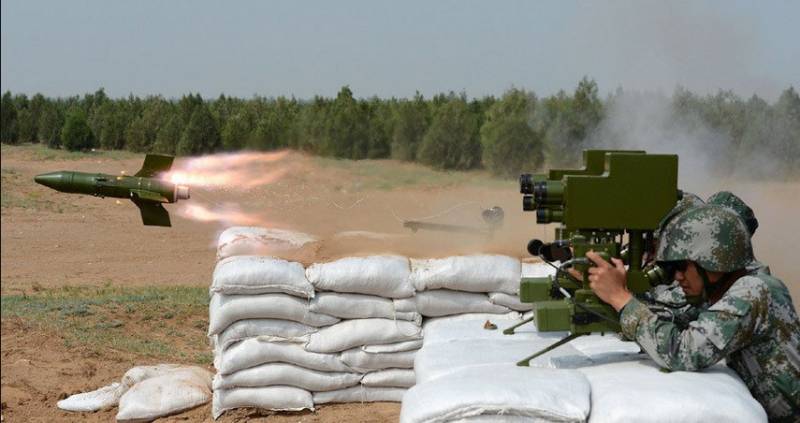
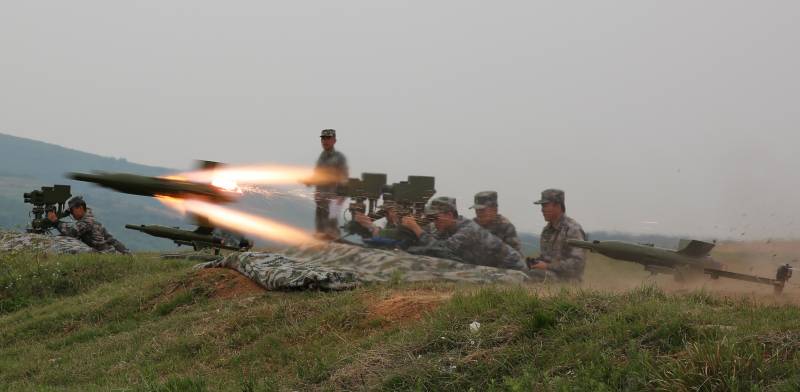
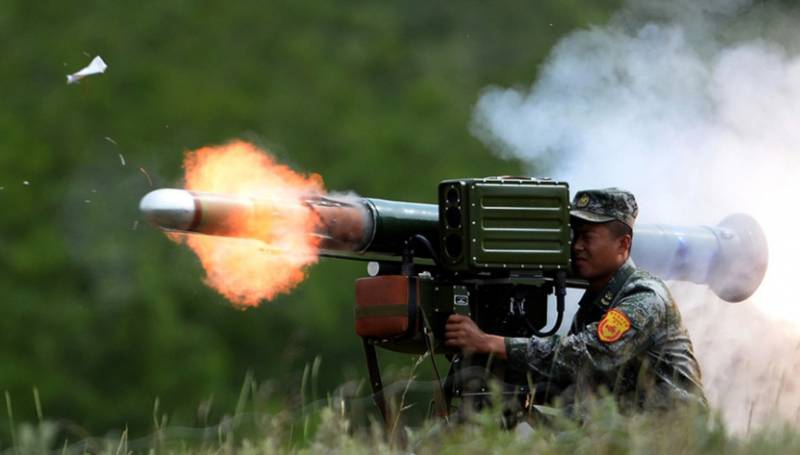
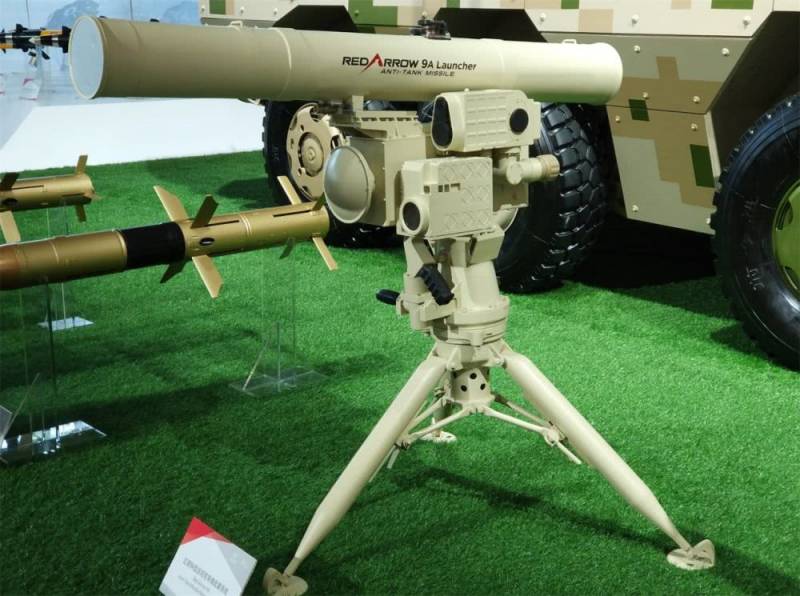
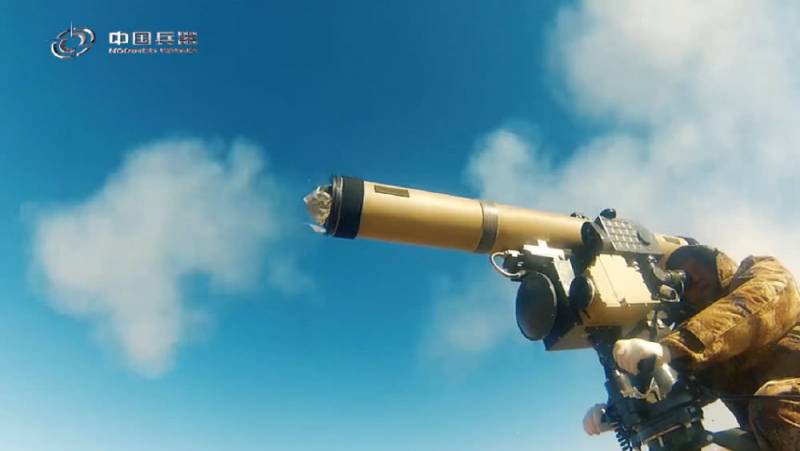
Information